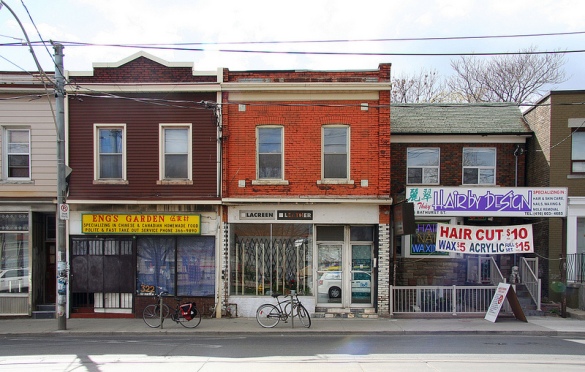Stipo, an Amsterdam based team of urban designers and planners, have released a book “The City at Eye Level: Lessons for Street Plinths.” The book is completely free and available online. I’ll be honest when I first took a look at it I had no idea what a “plinth” was. I now know it means “the base or socle upon which a column, statue or structure rests.” In Dutch it also translates to mean the ground floor of a building. The word captures beautifully the thought the ground floor is a place of transition. Just as a plinth represents the transition between the structure that rests on it and the ground, the ground floor reprsents, as the authors explain, a place of transition between inside and the outside, between the public and the private.
The book’s primary premise is that the plinth is the most important part of the building and its success is crucial to the vitality of the building, neighbourhood and the local economy. As one of the contributors writes “New high-rise can be part of the city centre, but not if they have a poorly designed plinth that kills the area around them.”
Building a good plinth is not easy to pull off. Stipo has developed a three-layer set of criteria containing 26 points that should be part of each analysis and strategy for plinths. One contributor, Adriaan Geuze, argues that to truly change and improve plinths in an existing city takes a least three generations.
To illustrate what makes a good plinth, the book has many contributors who provide a history of city streets, an overview of iconic urban designers and thinkers (Kevin Lynch, Gordon Cullen, Jane Jacobs, Jan Gehl, Allan Jacobs), and case studies on how streets work, where good plinths exists, and how to improve those where improvement is needed.
I found one of the more interesting case studies to be on Meanwhile Spaces. Meanwhile Spaces is an organization that promotes what I would call pop-up stores by finding and linking people who are looking for opportunity spaces for social enterprises or to provide community benefit to landlords that have spaces that are temporarily vacant.
Why is a Meanwhile Space useful for improving plinths? As Emily Berwyn explains:
People want interesting things to see and do–that don’t cost a fortune. And increasingly they want to do their shopping online, or in suburban retail hubs. We can’t change that. But we feel meanwhile use is a good way to test new uses on the high street and through meanwhile, we can help our high streets to adapt to an uncertain future and to become places that people want to spend their time again. Our vision for an ideal ground floor is one where vacant space does not exist; that vacant periods are foreseen and ‘curated’ to give people a chance to test an idea, even for a few days or a few weeks. This requires a transparency of ownership, a flexible approach to bureaucracies, and somewhere to store all the knowledge on an area so it is easily accessible.
Meanwhile Spaces is a fascinating idea, one of the many in the book. I strongly suggest taking a look, who knows what may inspire you.


